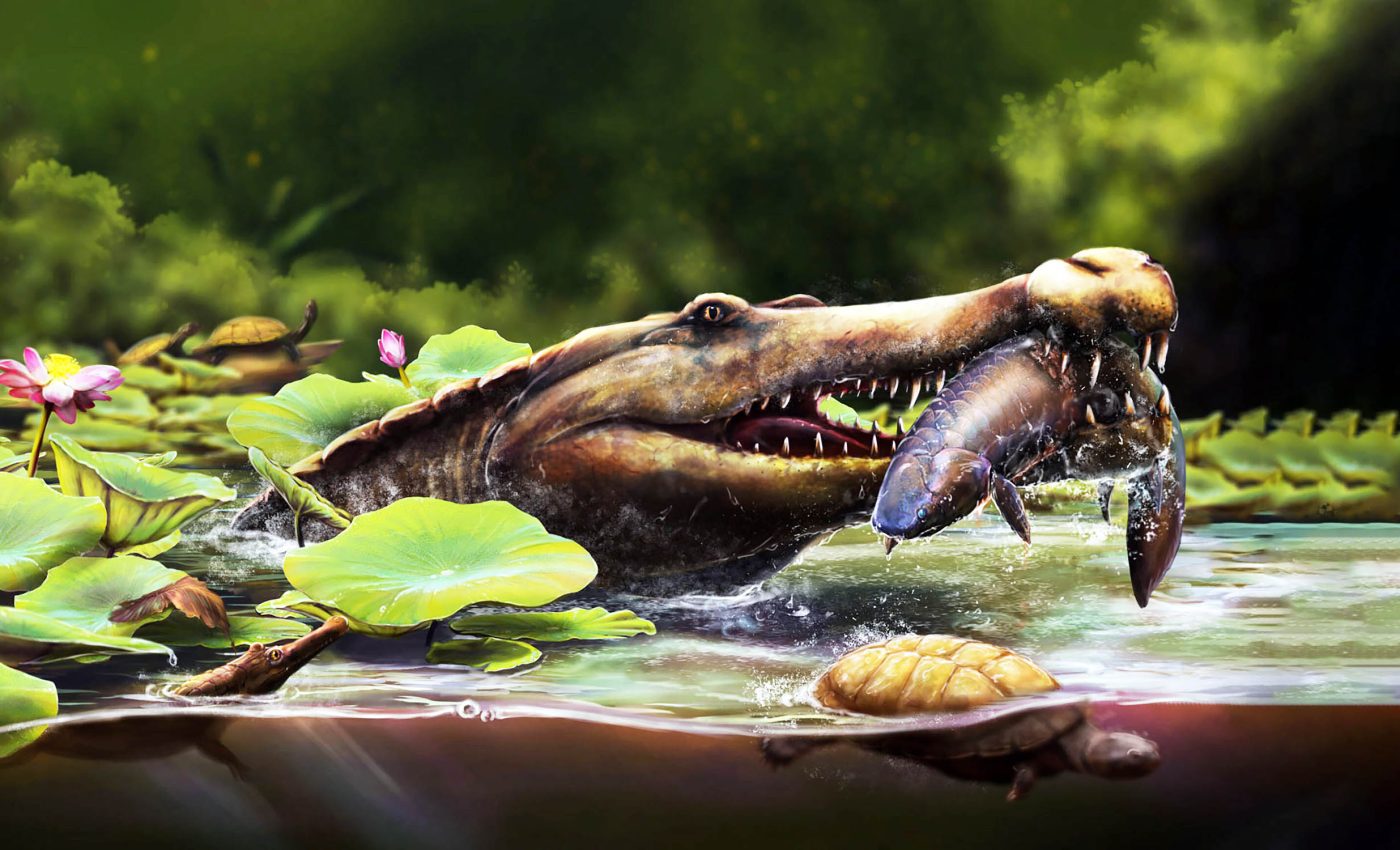
Ancient crocodile from Egypt rewrites the origins of its entire family
In the middle of Egypt’s Western Desert, the sand hides stories that are millions of years old. Recently, scientists uncovered one of those stories near Kharga Oasis.
Among layers of red sandstone and green shale, a fossil appeared that rewrites crocodile history. It belongs to Wadisuchus kassabi, a species that lived around 80 million years ago.
The research reveals how early crocodiles adapted to life near the sea.
Success of ancient crocodiles
The finding, described in The Zoological Journal of the Linnean Society, comes from a team of Egyptian paleontologists.
Wadisuchus kassabi wasn’t a typical crocodile. Modern ones prefer rivers and swamps, but this species hunted in coastal waters.
The creature’s long, narrow snout and sharp teeth helped it catch fast, slippery prey like fish and turtles.
After the dinosaurs vanished, these marine crocodiles survived and spread. Their success helps scientists see how reptiles recovered when the planet’s ecosystems nearly collapsed.
Wadisuchus kassabi fossils
The new species’ name pays tribute to Egypt: “Wadi,” meaning “valley” in Arabic, refers to the New Valley region where the fossil was discovered.
“Suchus” comes from Sobek, the ancient crocodile god. The second part, “kassabi,” recognizes Professor Ahmed Kassab of Assiut University, a pioneer who inspired many young Egyptian researchers.
The fossils of Wadisuchus kassabi were excavated near Kharga and Baris oases in Egypt’s Western Desert.
“They include two partial skulls and two snout tips representing four individuals at different stages of growth, providing rare insight into how dyrosaurids developed,” noted Professor Hesham Sallam of Mansoura University.
“High-resolution CT scans and 3D surface models enabled us to reveal unprecedented anatomical details.”
Features of the ancient crocodile
The fossils offered more than shapes. They showed how ancient crocodiles evolved new features.
According to Sara Saber, the study’s lead author and member of the Sallam Lab, Wadisuchus kassabi was a crocodile-like reptile that was 3.5 to 4 meters long with a very long snout and tall, sharp teeth.
“It differed from other dyrosaurids, in having four teeth at the front of the snout instead of the primitive five, nostrils positioned on top of the snout for surface breathing, and a deep notch at the tip of the snout where the jaws met,” noted Saber.
That small change in tooth number tells a big story. It shows a shift in how ancient crocodiles bit and fed.
“Beyond the distinctive features of Wadisuchus, it plays a crucial role in understanding the origin of the dyrosaurid group,” said Saber.
“The new species pushes back evidence for an African origin of Dyrosauridae and suggests that their diversification began earlier than previously thought – possibly during the Early Coniacian-Santonian (about 87–83 million years ago), rather than the traditionally assumed Maastrichtian (about 72–66 million years ago).”
Africa’s evolutionary hub
The research changes where scientists think ancient crocodiles came from. Wadisuchus kassabi places Africa at the start of the Dyrosauridae family tree.
Study co-author Belal Salem is a PhD student at Ohio University and Curator of Fossil Reptiles and Birds at Mansoura University.
“This discovery indicates that Africa was the cradle of dyrosaurid evolution, from which later lineages spread across the globe and our phylogenetic analyses consistently place Wadisuchus an ancestor of the dyrosaurid group,” said Salem.
“The significance of Wadisuchus lies not only in what it reveals about the evolutionary history of this remarkable group of crocodiles – though that is a major achievement – but also in what it reminds us of: Egypt’s Western Desert still holds treasures that preserve the secrets of our planet’s deep past.”
Importance of Wadisuchus kassabi
The fossils from Kharga Oasis are more than scientific finds. They are pieces of Egypt’s natural heritage. Urban projects and farming now threaten the same lands that guard these secrets.
“Our mission is not only to uncover these fossils but also to protect the fossil-rich sites from urban expansion and agricultural encroachment. They are a legacy for generations of Egyptians to come,” said Salem.
Wadisuchus kassabi links today’s world with a vanished one. Its long snout, sharp teeth, and ancient origin tell of survival and adaptation across ages.
Each fossil that surfaces from Egypt’s Western Desert adds another line to Earth’s story. The sands may look silent, but beneath them lies proof that Egypt helped shape the history of life itself.
The study is published in the Zoological Journal of the Linnean Society.
—–
Like what you read? Subscribe to our newsletter for engaging articles, exclusive content, and the latest updates.
Check us out on EarthSnap, a free app brought to you by Eric Ralls and Earth.com.
—–













